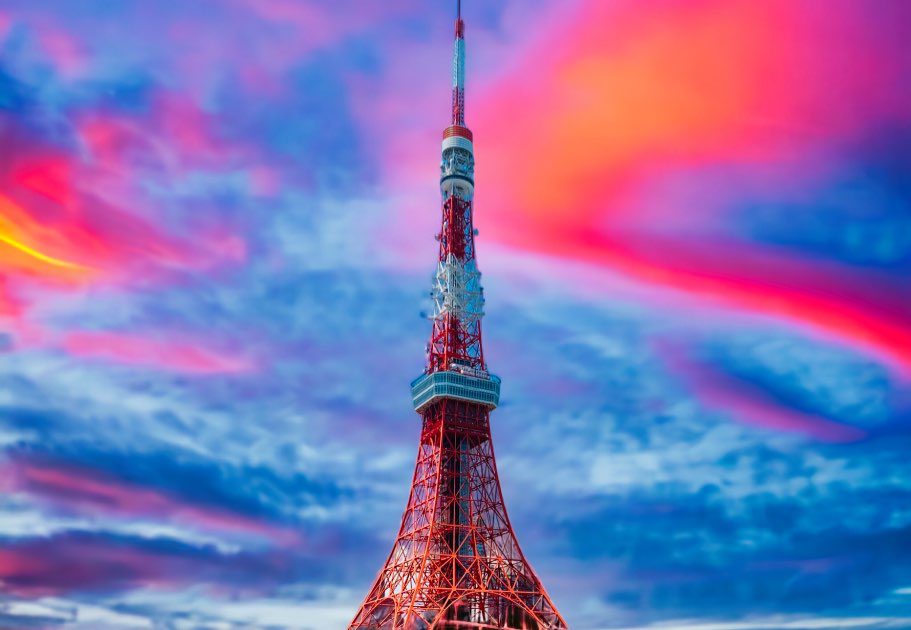When we think of Tokyo, Japan’s vibrant capital, one iconic landmark often stands out in our imaginations – the Tokyo Tower. This dazzling structure, reaching a height of 333 meters, commands a distinctive presence in the city’s skyline, embodying the spirit and identity of not just Tokyo but Japan itself.
Mirroring the architectural elegance of the Eiffel Tower in Paris, the Tokyo Tower does more than pay homage to its French counterpart. Yet, despite the apparent resemblance, Tokyo Tower stands taller than the Eiffel Tower, outreaching it by 9 meters, subtly signaling the aspirations of a nation that has always strived to reach new heights.
Table of Contents
Location:
Tokyo Tower is located in the Shiba-Koen area of Minato Tokyo. It is a communications and observation tower.
Officially it is a Radio Tower and known as ‘Nippon denpato.’ The Tower was built in 1958. However, it is one of the most famous tourist spots in Metropolis Tokyo.
Tokyo Tower’s History:
Embarking on our journey through Tokyo Tower’s past, we travel back to the mid-20th century. The tower’s construction started in 1957 and culminated a year later, in 1958, marked by post-war recovery and burgeoning optimism. The primary purpose of building the Tokyo Tower was to serve as a broadcast tower, a practical solution to Tokyo’s growing need for TV and radio broadcast capabilities in an era marked by rapid technological advancement.
However, the tower’s inception was full of challenges. The construction took place during a period in which Japan was still recuperating from the devastation of World War II. Nevertheless, the country gathered its resources, displaying a resilience that has since become synonymous with its national character. Remarkably, the entire project was funded domestically, without any international aid, marking a significant milestone in Japan’s post-war economic recovery.
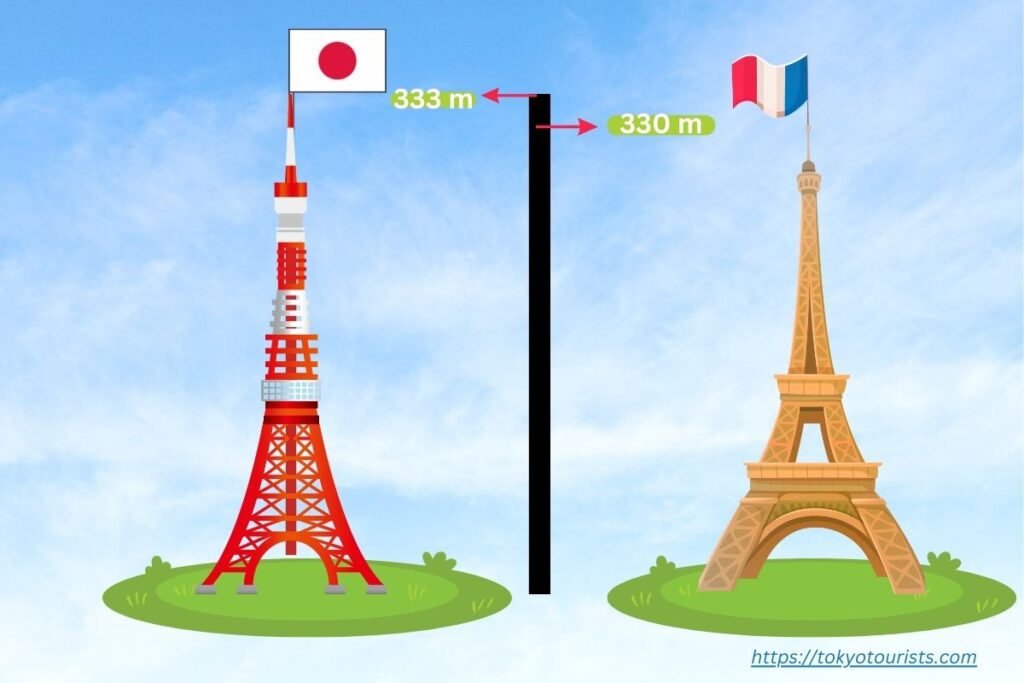
In the following decades, Tokyo Tower became integral to significant events, from broadcasting the Tokyo Olympics in 1964 – Japan’s first-ever hosting of the games – to enduring the Great Kanto Earthquake in 2011. Yet, despite some damage, the tower stood firm, symbolizing the enduring spirit of Tokyo.
Over time, Tokyo Tower has transformed from a functional structure into a cultural icon, its history intertwined with the city it proudly represents. So as we explore the Tokyo Tower’s story, we’re not merely tracing the timeline of a building. Still, we’re also chronicling the city’s progression from a post-war recovery phase to its status as a global powerhouse.
Design of Tokyo Tower:
The tower is quite a sight. It stands tall and bold with its bright orange and white colors. The whole tower was painted this way for a particular reason. The colors are not just for beauty but also safety. This color scheme ensures planes can see the tower clearly when flying nearby.
If we look closely, Tokyo Tower’s design is similar to the Eiffel Tower in Paris. But Tokyo Tower is not a copy. It has its own particular features that make it different and unique. The tower has a light steel structure, making it quite impressive that it stands tall and strong.
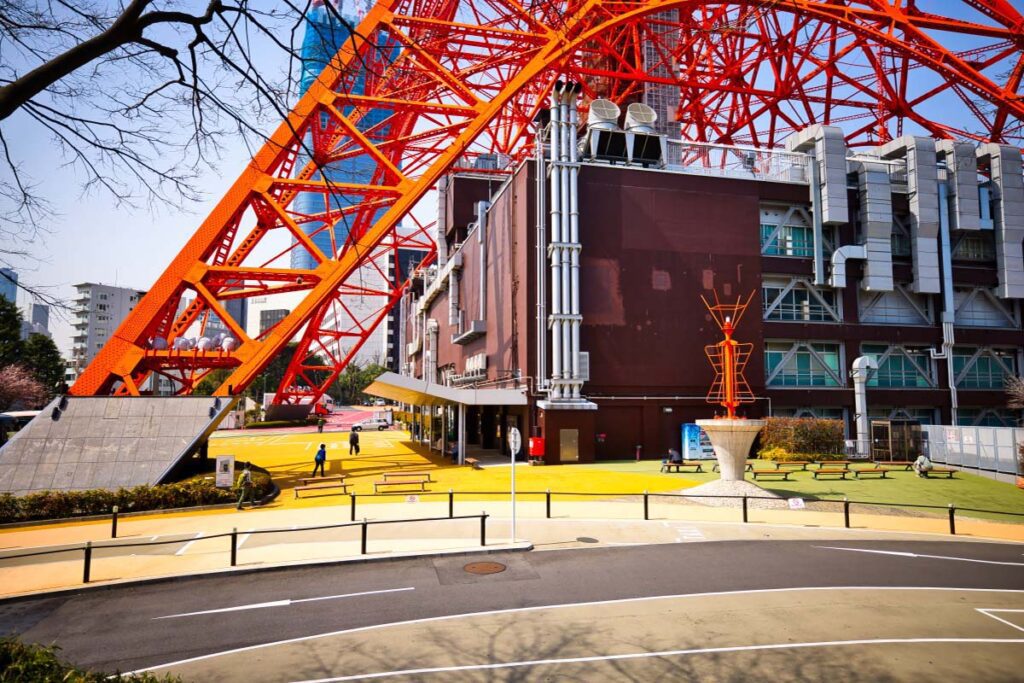
Tokyo Tower has two main parts: the FootTown and the tower itself. The FootTown is at the base of the building. It has several floors, each filled with different things. You can find restaurants to eat, shops to buy gifts, and even a museum to learn more. It is like a mini city beneath the tower.
As for the tower itself, it has two main viewing decks. The Main Deck is 150 meters high, while the Top Deck reaches 250 meters. Each deck lets you see the city from a different height, offering unique and breathtaking views of Tokyo.
In summary, Tokyo Tower is not just tall and brightly colored. It is thoughtfully designed, with different floors offering various experiences. The orange and white tower in the middle of Tokyo symbolizes the city’s charm and spirit.
Views from Tokyo Tower:
Riding up Tokyo Tower is like entering a new world. As you go higher, the city of Tokyo unfolds beneath you.
You can see the busy Tokyo from the Main Deck, which is 150 meters high. The view is filled with buildings that extend as far as one can see. Cars look like tiny toys from up here, and people seem as small as ants. It’s a great spot to watch the city move and change throughout the day.
The view gets even better when you go up to the Top Deck. At 250 meters high, it feels like you’re on top of the world. The city stretches out even further; visitors can see Mount Fuji on a clear day. With its snow-covered peak, the famous mountain stands tall against the blue sky, creating a beautiful picture.
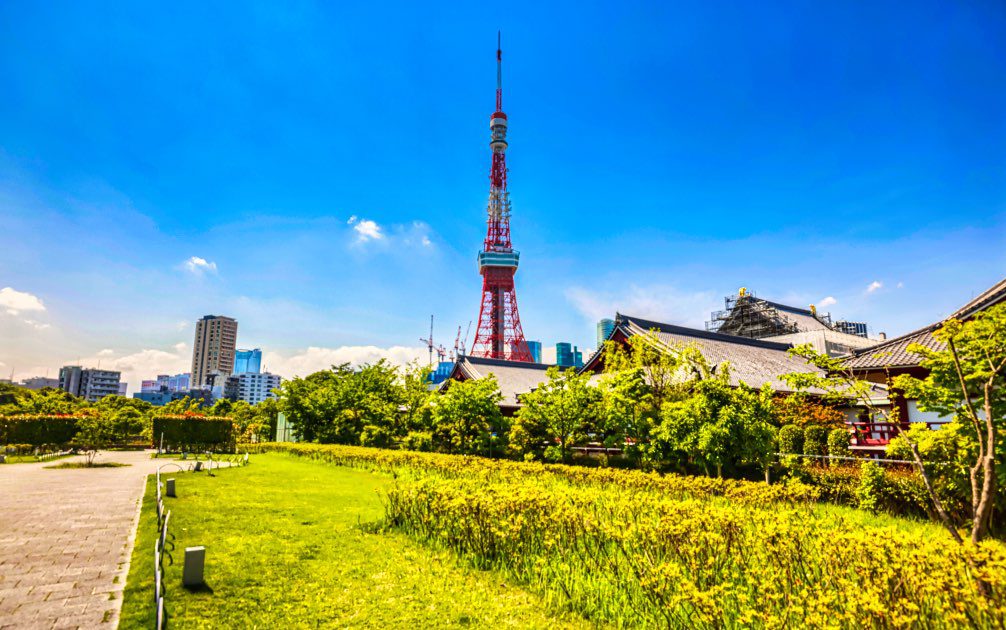
Whether day or night, the view from Tokyo Tower is always excellent. During the day, you can see the busy life of the city and the beautiful nature around it. At night, Tokyo turns into a sea of lights, shining bright and beautiful.
So, the next time you visit Tokyo Tower, take a moment to enjoy the view. It’s not just about seeing the city from above; it’s about experiencing the heart of Tokyo from a whole new perspective.
Attractions Inside Tokyo Tower:
Tokyo Tower is for more than just looking at the city from above. There are various things to see inside the tower, too. For example, at the base of the tower is a place called FootTown. FootTown is like a mini city, filled with many shops, restaurants, and even a museum.
You can find various things in the shops, from toys and clothes to unique gifts. The restaurants serve various food, so there’s something for everyone. The museum is excellent for learning more about Tokyo Tower and the city’s history.
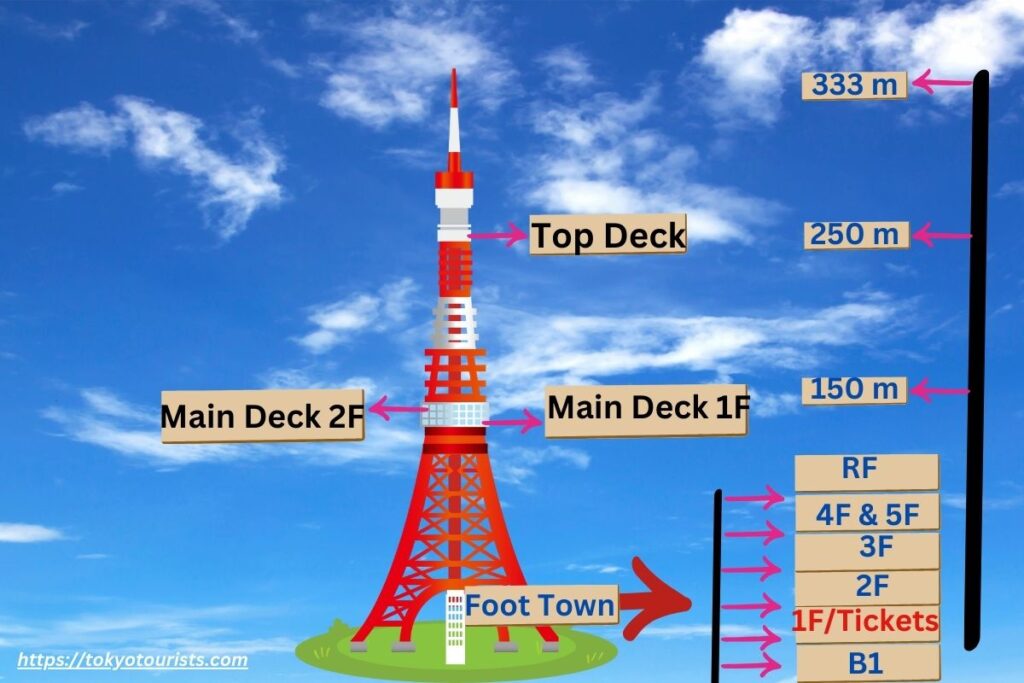
One particular place inside Tokyo Tower is the Love Lock area. Here, couples write their names on padlocks and attach them to a fence, a way for two people to express their affection towards each other. And make a promise to stay together. In different colors and sizes, these locks create a colorful display against the tower’s orange color.
Tokyo Tower also has other fun things to do. For example, there’s an aquarium with all kinds of sea animals and a special glass floor on the Main Deck. Visitors can stand on the glass and look down at the city below their feet.
In summary, Tokyo Tower is about more than just the views. It’s a place full of fun and exciting things to do. So whether you’re shopping, eating, learning, or making a love promise, there’s something for everyone at Tokyo Tower.
Tokyo Tower at Night:
When the sun goes down, Tokyo Tower puts on a magical show. It transforms from a bright orange tower into a shining beacon of light in the middle of the city with thousands of tiny lights called LEDs. These lights cover the tower, making it shine brightly against the night sky, a tradition at Tokyo Tower that happens every night.
The tower’s lights aren’t just plain white. Sometimes, they change colors for special occasions. For example, they might turn pink for cherry blossom season or red and white for a national holiday. These lights add a touch of color to the city’s skyline and make the tower even more beautiful at night.
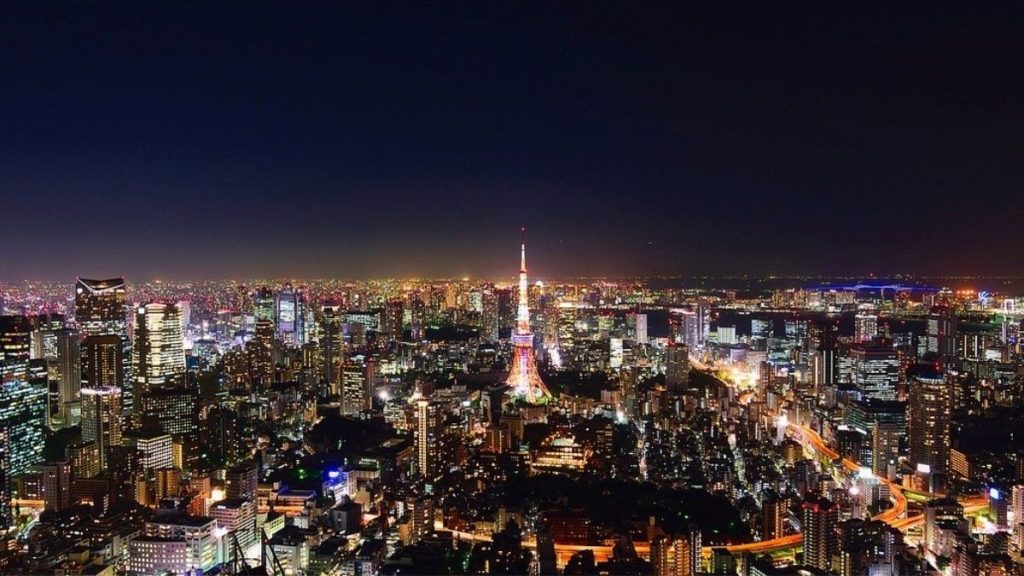
But the best part is how the tower lights up the surrounding area. When you stand near Tokyo Tower at night, you can see its lights shining on the nearby buildings, streets, and trees. As a result, the entire area gets bathed in a soft, warm glow. It’s a beautiful sight and makes for great photos.
If you ever visit Tokyo, take the chance to see Tokyo Tower at night. It’s a beautiful experience and a great way to end a day of exploring the city. The glowing tower against the night sky is a sight you’ll remember for a long time.
Tokyo Tower Beyond Tourism:
You might think Tokyo Tower is just a place for tourists. But it actually does a lot more. The primary purpose is to help with TV and radio signals. You see, Tokyo Tower acts like a giant antenna. It sends out signals so that people in and around Tokyo can watch TV and listen to the radio, which is crucial as it helps people stay connected and informed.
Companies that need to send out these signals can ‘rent’ space on the tower, called an antenna leasing business. By doing this, Tokyo Tower helps many companies get their signals out to the public.
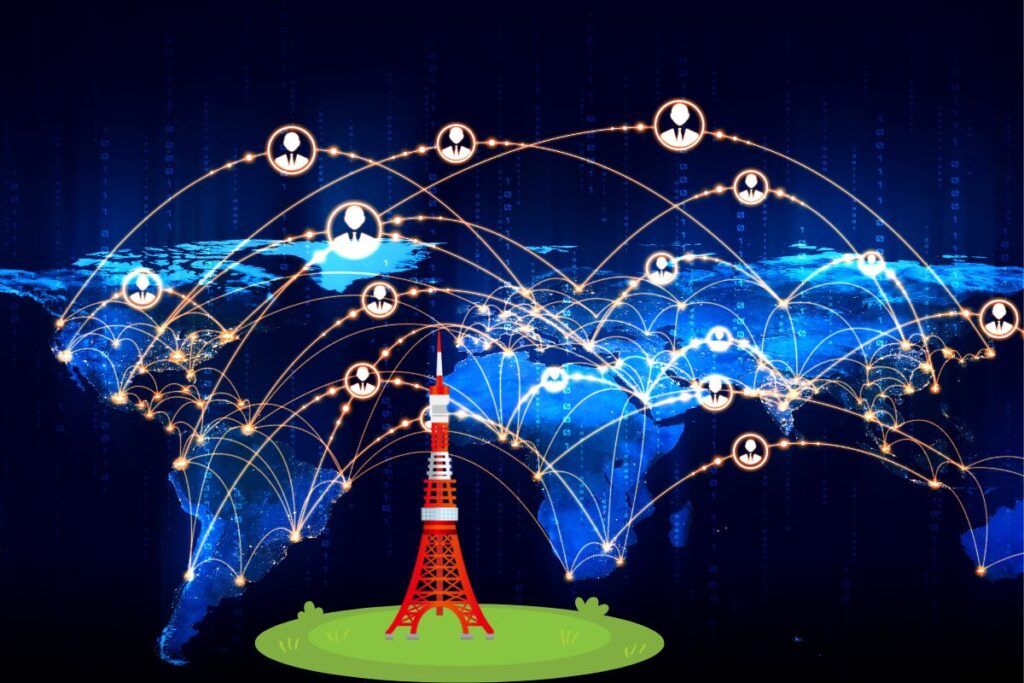
So, while we might visit Tokyo Tower to enjoy the amazing views or the shopping. But it’s helping the people of Tokyo get the news, listen to music, and watch their favorite shows, which makes Tokyo Tower a symbol of the city and a key part of how the city works.
In short, Tokyo Tower is more than just a beautiful landmark. It’s also an important part of Tokyo’s media system. So next time you look at Tokyo Tower, remember: it’s not just a tourist spot, it’s also a working part of the city!
In the end, Tokyo Tower is more than just a tower. It’s a symbol of Tokyo and Japan. It stands tall, showing the world the spirit and dreams of the city. Its bright lights and stunning views bring joy to those who visit. But it’s also a hard worker, helping to keep the city connected. From its history to its design, from the views to the attractions inside, Tokyo Tower truly is a special part of Tokyo. Whether you’re looking up at it from the ground or looking out from the top, it’s a sight that will always make you feel the spirit of Tokyo.
Surroundings:
Tokyo Tower is like a tall, bright lighthouse in the middle of the city. It’s super modern but sits close to Zozoji Temple, a peaceful place that’s been around for centuries.
Right nearby, there’s another old temple called Shiba Daijingu, filled with the smell of incense and the sound of quiet prayers. These spots show you the amazing mix of old and new that you can find in Tokyo.
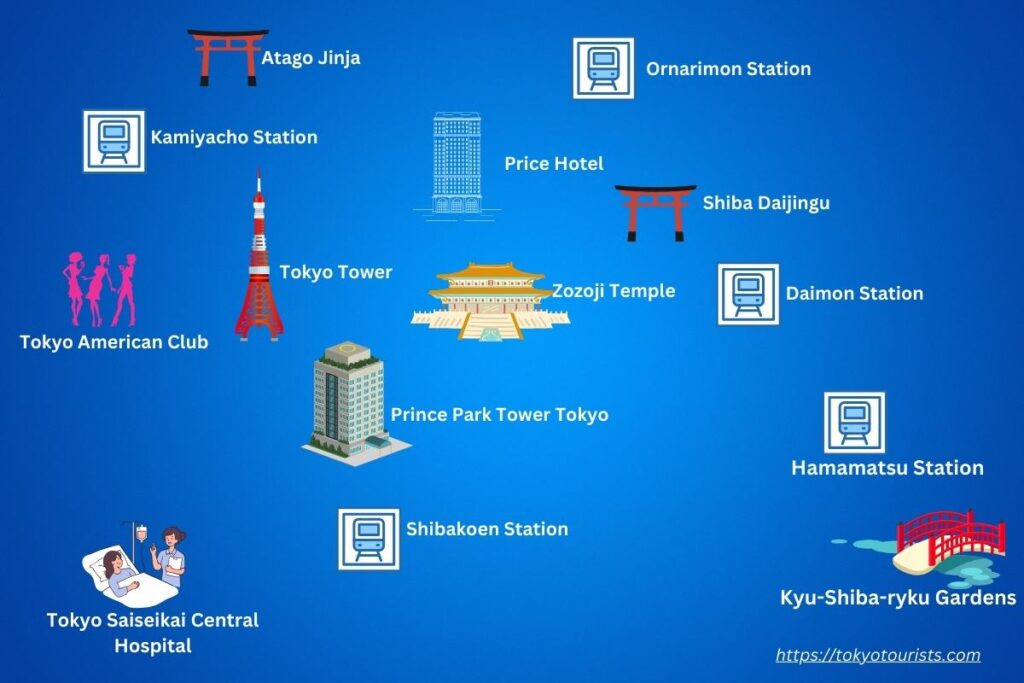
If you walk a bit, you’ll find Kyu-shibarikyu Gardens, a beautiful park with ponds and trees that look like something from an old painting. It’s a complete change from the Tokyo American Club, a lively place where people from all over hang out.
There’s also Atago Jinja on a hill, where you can see the whole city spread out below you. It’s like stepping into a different world where the past and the present are friends.
Each place gives you a little taste of everything Tokyo has to offer. Enjoy the surroundings of the Iconic Toky Tower.
Where to buy Tokyo Tower’s Ticket:
Tokyo is a destination for millions of tourists every day because of its safe and beautiful attractions. Most of the tourist spots usually remain crowded, especially during the ticketing.
As a result, some of the tourists waste their time on the spot for tickets. So, it is advisable to purchase tickets online because it becomes easier for tourists to visit places without wasting time on tickets. Buy Tokyo Tower tickets here.
Opening hours:
MAIN DECK(150m)
9:00~22:30(Last admission 22:00)
TOP DECK TOUR
9:00〜22:15(Last admission 21:30~21:45)
Stairs to the MAIN DECK
9:00〜16:00(Last admission 16:00)
Closing day: Open every day
Ticket Price:
Adults: 3,000 Yen
High School Students: 2,800 Yen
Juniors: 2,000 Yen
Children (age 4 to 6): 1,400 Yen
Hotels Nearby:
Two great pick hotels near the tower are Prince Hotel, known for its big rooms and top-notch service, and Prince Park Tower Tokyo, for a mix of Japanese style and modern perks.
If you want to stay near Tokyo Tower, Andaz Tokyo is a fancy hotel with excellent city views.
Lastly, the Shiba Park Hotel is a comfy place nearby. If you want a simple but comfortable stay, try Richmond Hotel.
All these hotels are really nice and close to the tower, so you can pick the one that suits you best.
How to access it?
By Train:
Nearest Station:
Akabanebashi Station
(Oedo Line)
A 5-minute walk.
Onarimon Station:
(Mita Line)
A 6-minute walk (Exit No. A1)
Kamiyacho Station:
(Hibiya Line)
A 5-minute walk (Exit No.1)
By Car:
A parking area is available, but it can be pretty busy. Therefore, using public transportation is generally recommended.
From Asakusa:
Take Ginza Line to Shimbashi Station and the Yamanote Line to Hamamatsucho Station. Tokyo Tower is about a 15-minute walk from here.
From Tokyo Station:
By Subway/Metro:
- Take the Marunouchi Line (red line) from Tokyo Station to Kasumigaseki Station.
- At Kasumigaseki Station, transfer to the Hibiya Line (grey line) and get off at Kamiyacho Station.
- From Kamiyacho Station, Tokyo Tower is approximately a 5- minute walk.
Bus from Tokyo Station:
Takes about 30 minutes from the Tokyo Station Marunouchi South Exit to the Tokyo Tower bus stop.
Adults: 220 yen
Children: 110 yen
Address:
4-2-8 Shibakoen, Minato City, Tokyo 105-0011, Japan
Official website:
Find and book your hotel nearby the Tokyo Tower in Minato City.
